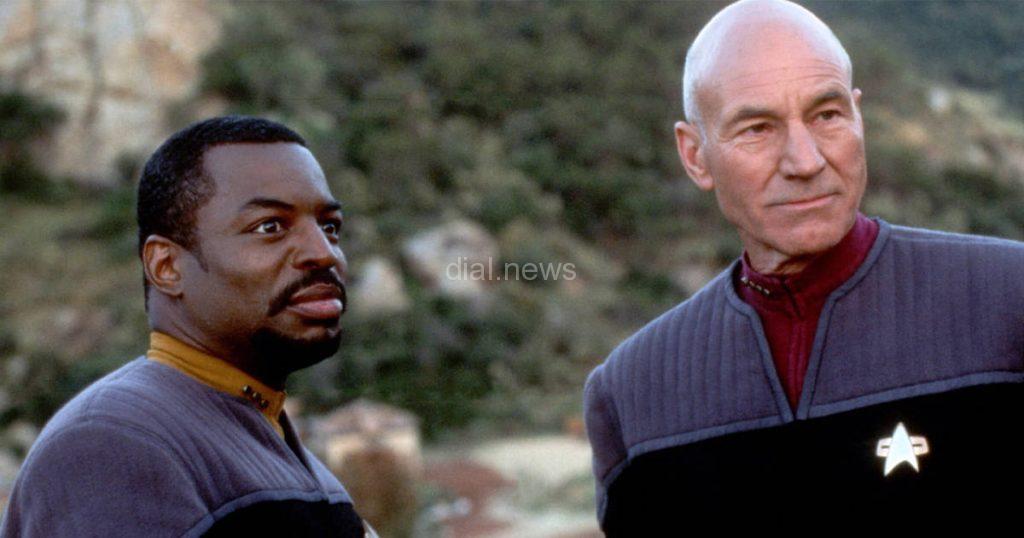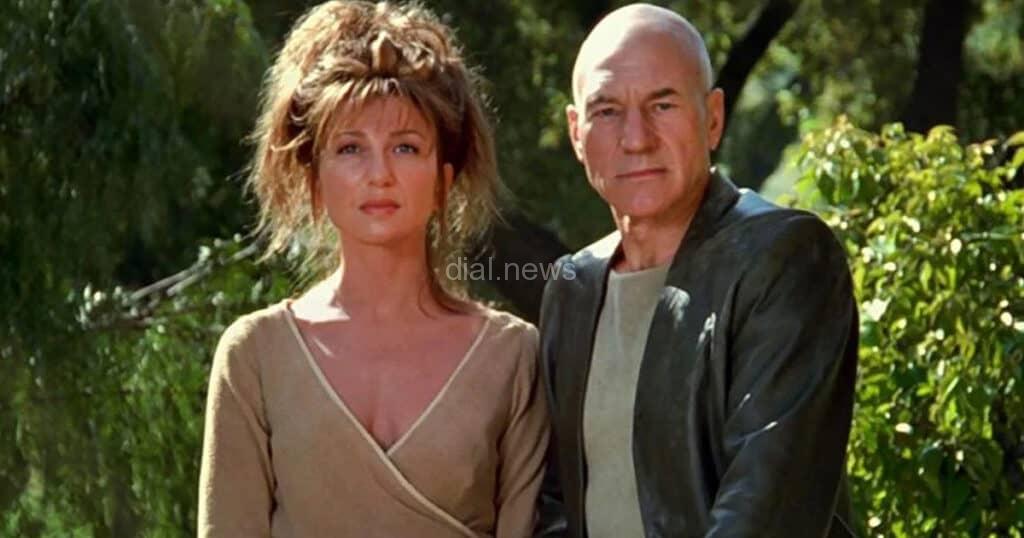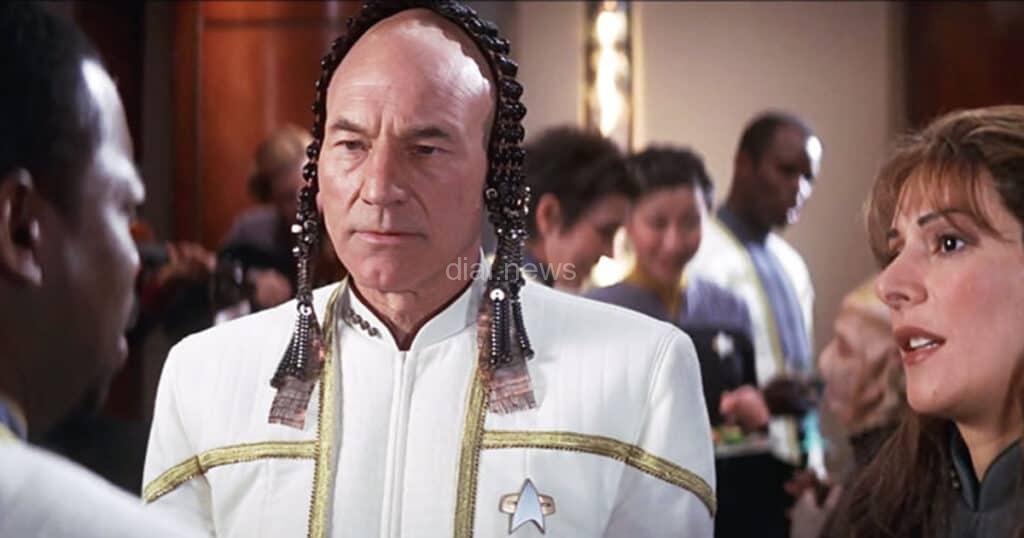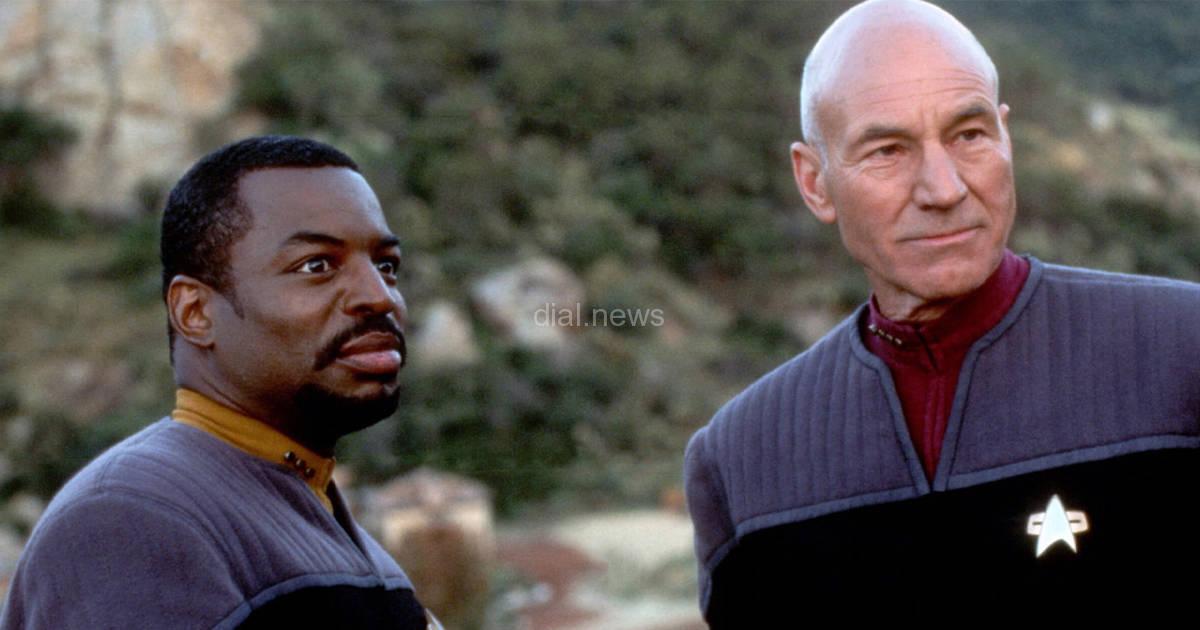[ad_1]
Yesterday was Star Trek day, marking the anniversary of Star Trek’s debut on tv in 1966. Since then, the series has spawned so much content that what’s considered the “best Trek” or “Worst Trek” is divisive. But, as far as the big screen movies go, one that remains divisive is 1998’s Star Trek: Insurrection. In 1996, Star Trek First Contact proved to be a sizeable hit for Paramount Pictures, with the action-packed addition to the franchise grossing a strong $92 million domestically and another $54 million abroad. Indeed, the franchise was set to continue, but as everyone who knows Trek is aware of, there’s a perceived curse on all the odd-numbered films in the series, and with this one being number nine, would Insurrection be the movie to break the pattern once and for all?
Nope.
Star Trek Insurrection is a curious follow-up to Star Trek: First Contact. While that movie was praised for being action-packed, for some reason, a much lighter tone was adopted for the follow-up, with the reasoning from Paramount being that they wanted another Star Trek IV: The Voyage Home. They certainly wanted it to make even more money than First Contact as the budget had to be increased significantly due to the crew’s higher salary demands, which is why Star Trek: Insurrection has a 70 million dollar budget compared to First Contact‘s 45 million, but significantly less in the way of action.
Indeed, this is the one Star Trek film that feels most like an episode of TNG, and a mediocre one at that. The film was written by Michael Pillier, a veteran of the series, and it revolves around the Ba’Ku, who are like the 24th-century version of the Amish. Despite being technologically advanced, they’ve eschewed tech to embrace small, communal living. Yet, they’re being terrorized by an invading force called the Son’a, who are in league with factions of Starfleet who want to relocate the Ba’ku to exploit the fact that the planet has rejuvenating qualities that make its inhabitants effectively immortal. For the Enterprise crew, that means that boobs and butts are firmed up, Worf goes through Klingon puberty – again – Troi and Riker get horny, Picard starts wearing a super tight tee, and Geordi gets his vision back.

While it has a bad reputation, the movie does have some interesting qualities. On the one hand, we see Picard go up against Starfleet as he feels his commanders are violating the Prime Directive in attempting to relocate the Ba’Ku. Like a lot of Trek, the Metaphorical themes in this one are heavy. It also digs heavily into the relationships between the Enterprise crew members, particularly the relationship between Jonathan Frakes’ River and Marina Sirtis’ Deanna Troi. Their on-again/ off-again romance was crucial on the TV show, but it was abandoned in later seasons. In the movie, when Riker and Deanna get their libidos boosted by the Ba’Ku’s homeworld, they end up rekindling their relationship and the chemistry between the two actors, who are such good friends that they did the Blu-ray commentary together, is one of the reasons Insurrection is worth watching. Riker even shaves off his beard and moustache for the first time since season 2.
Notably, Brent Spiner hoped to have Data killed off in this instalment, a la Spock, but Patrick Stewart was thoroughly opposed to them knocking off his foil. In early versions of the script, Data met his maker, but when he received the final script, in which Data lived, it came with a note from Stewart saying, “Better luck next time.” Spiner would eventually get his wish – in a fashion – with the divisive Star Trek: Nemesis.

For Patrick Stewart, who was always concerned about how Insurrection’s scale paled compared to First Contact, the Picard role would be somewhat underdeveloped. It wasn’t supposed to be that way, as he was supposed to have an actual love interest in Donna Murphy’s Anji, but their romantic scenes were cut out of the movie, much to Picard’s displeasure. He also wanted the final battle to be done on a grander scale, and his final confrontation with the movie’s villain, F. Murray Abraham’s Ru’afo, is too reminiscent of the low-key battle with Malcolm McDowell’s Soran in Generations. However, Patrick Stewart, similar to First Contact, gets to show off his ripped biceps again.
In the end, Star Trek: Insurrection was a mixed bag as far as Trek movies went at the box office. It only grossed $70 million domestically, far less than First Contact. The end result was $5 million less than Generations, and that movie only cost half as much. With its worldwide grosses included, the movie made about $117 million, which means it likely lost money theatrically, the first time for a Trek movie since Star Trek V. However, it likely broke even on home video and cable. It wasn’t enough to kill the franchise – it would take another pretty lousy movie for that to happen, but it paled next to First Contact. Indeed, the studio seems to be losing faith in it at some point, with test screenings for the film resulting in a lot of cuts, and the movie got a belated premiere at CineVegas. By contrast, the last film received a Royal Premiere in England. It didn’t help that when Insurrection came out, it was the heyday of sites like Ain’t It Cool News, and the word was out on the movie being silly and low-key long before it ever hit theaters.

Looking back at it now, Insurrection suffers because the story is an absolute dud. How do you go from fighting the Borg to an alien race, The Son’a, who had never been in the Trek universe before and turned out to be human victims of bad plastic surgery? Sequels should be bigger, not smaller, and the commentary track by Frakes is invaluable as he goes into some of the reasons the movie wound up being so low-key and how the writing was on the wall for the movie long before it hit theaters, leaving him to do his best. He would be disastrously replaced for the next film by Stuart Baird, a director many say had no feel for the franchise, and its unfair that he’s taken some of the blame for the movie’s failings, which include subpar CGI effects. This is because ILM was not responsible as they were on First Contact, likely because the movie came out just six months before The Phantom Menace. This was the first Star Trek movie where all the effects were CGI, and at the time, they looked decent, but now seem archaic, which Frakes himself noted in the commentary with some consternation.
Even still, the movie benefits from F. Murray Abraham chewing some scenery as the bad guy, another fine Jerry Goldsmith score, and some excellent character beats for the cast. One especially nice moment has Geordi, whose sight has been restored by the Ba’ku homeworld, opting to throw his lot in with his comrades, even though he knows it’ll cost him his sight, with him telling Picard, in a lovely moment, “How could I look at another sunset knowing what it cost them.” I also like the Troi/Riker romance, and Brent Spiner, despite wanting Data to die, delivers a relaxed performance, with his chemistry with Patrick Stewart ramped up in this one.
While Star Trek Insurrection is one of the worst Trek films, it’s not actually THE worst. Sadly, that was still to come in one final big screen voyage for the crew of the Enterprise that would make this movie look like The Wrath of Khan by comparison. But, that’s a story for another time.
[ad_2]

